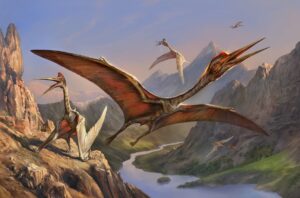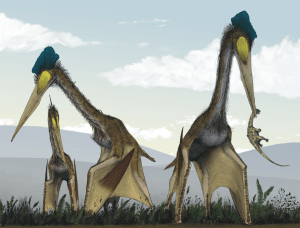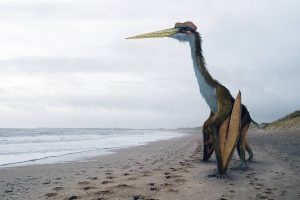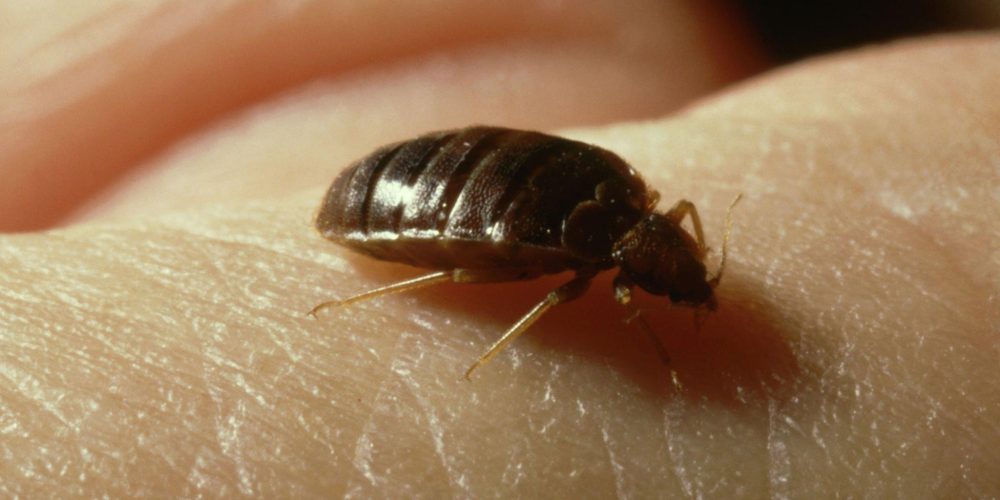Imagine lying down while spending your vacation at the beach under a clear sky. Suddenly, a huge shadow in the shape and size of a 12-foot (or 3.6 meters) airplane flies over you, and when you look up, it isn’t a plane but a wandering albatross!
At that moment, you might be tempted to think that that is the largest animal to have ever graced the sky. Sorry to burst your bubble, but it isn’t even close to being the largest. In fact, the largest animal to have taken to the sky wasn’t even a bird.
It might sound surprising to you, but the fact is that the largest animal to have ever flown is considered a reptile. And it is none other than Quetzalcoatlus! The pronunciation is certainly suitable as a tongue twister.
Quetzalcoatlus was a pterosaur
The name “Quetzalcoatlus” literally means “feathered serpent god”, having its roots from the name of the Mesoamerican (Aztec) serpent-god “Quetzalcoatl”. The very first fossil of these flying reptiles was first discovered in Texas, the United States of America, in 1971 by Douglas Lawson, who was a graduate student at that time. It was not until 1975, however, that he announced and named the animal and included yet another subspecies.
Quetzalcoatlus belongs to a category of animals called “pterosaurs”, which literally means “winged lizard.” Pterosaurs include several families of flying lizards, and Quetzalcoatlus happens to belong to the family of Giant Azhdarchid Pterosaurs. This family of giant pterosaurs includes several other sub-species of pterosaurs, but then, Quetzalcoatlus remains the largest of them all.
As mentioned earlier, Quetzalcoatlus consists of two species; the first, as identified by Douglas Lawson, is Quetzalcoatlus northropi, while the second, which is considered a species, was named Quetzalcoatlus sp. by Alexander Kellner and Professor Wann Langston Jr. in 1996, meaning that its status was too uncertain to give the species a new name.
Size and wingspan
From fossils and skeletons of both species collected so far, Quetzalcoatlus northropi is the larger of the two and is often the favorite of paleontologists and other researchers due to its staggering heights and unbelievable length in wingspan. The smaller Quetzalcoatlus sp. is estimated to have a wingspan stretching between just 16 to 18 feet (or 5 to 5.5 meters). This is much smaller compared to the wingspan of Quetzalcoatlus northropi, which is estimated to be between 36 to 40 feet (or 11 to 12 meters).
By comparison, that is about the size of an average private airplane such as a Cessna or, if you wish, a London city bus. Apart from the enormous wingspan, Quetzalcoatlus northropi also had an estimated body length of between 30 to 40 feet (or 9 to 12 meters) and a standing height that possibly exceeded that of a giraffe, namely approximately 20 feet (or 6 meters). As for its weight, paleontologists estimate that it weighs between 200 to 250 kg (or 440 to 550 lbs).
Homo sapiens are quite lucky not to have been around before these animals became extinct. Otherwise, we would have been easy prey for these huge flying beasts.
You must be wondering when these flying reptiles lived. Well, we’ve given you a hint earlier on; they lived in the same period when dinosaurs were around. To be specific, Quetzalcoatlus lived in the late Cretaceous Period between 72 million to 65 million years ago. Like their distant relatives — dinosaurs, they went extinct during the Cretaceous-Palaeogene (K-Pg) mass extinction which was previously known as Cretaceous-Tertiary (K-T) mass extinction.
Where did Quetzalcoatlus live?
Where exactly did Quetzalcoatlus live? If you’re looking for a straightforward, practical answer about an already established location, the answer would be North America. Specifically, it would be sited to be the Big Bend National Park, Texas, United States of America. This was the area where the first fossils were found.
At that time, Texas was a big, vast swamp of land, with the swamp covering a huge part of North America all the way to Canada. However, if you want a theoretical answer as to where these animals lived before their mass extinction millions of years ago, we would say that they could have lived just about anywhere (including even Antarctica, which was very different some 65 million years ago).
The fact that most specimens collected were from North America isn’t a definitive reason to believe that they lived only in North America. The advantage North America had was its environment which was perfectly suited for the fossilization of these creatures. So, there’s no need to be surprised if tomorrow, fossils of Quetzalcoatlus were discovered in Africa.
What did it eat?
With its enormous size, unusual body structure, and very long beak, what could Quetzalcoatlus have fed on when it was alive? The diet and especially the eating habits of Quetzalcoatlus have generated quite a great deal of debate among paleontologists and other researchers.
The conflicting analysis is due to the body structure, shape, and size of the creature plus the fact that there’s no other animal alive today that can be used as a model in studying the feeding habits of these long-extinct animals. However, there is one fact about their diet that everyone seems to agree on, and that is the fact that Quetzalcoatlus were carnivores and not herbivores.
While every paleontologist agrees that they ate other animals, they disagree on what kinds of animals they fed on. Most of them hold the view that Quetzalcoatlus had a hunting pattern similar to storks which are terrestrial stalkers. This school of thought believes that they hunted a huge variety of land animals and would, in fact, snatch up unprotected juvenile dinosaurs if presented with the opportunity.
However, some others believe that its diet was better suited to have been fishes, crustaceans, and other sea reptiles, which they believe that Quetzalcoatlus would have easily skimmed off the surface of the water. However, this was subjected to scientific research, and the results showed that Quetzalcoatlus, like other azhdarchids, are better suited as terrestrial stalkers due to its long, stiff neck, which makes fish hunting very challenging.
The extinction of Quetzalcoatlus
Having considered what it ate, where it lived, and when it lived, the next focus is what could have led to the death/extinction of these giants? As mentioned earlier, Quetzalcoatlus went extinct in the late Cretaceous period, which coincidentally is the same period when dinosaurs also went extinct.
It is believed that the extinction of Quetzalcoatlus coincided with the K-Pg mass extinction of 65 million years ago, in which a 10 to 15 km (or 6 to 9 miles) wide asteroid crashed into the Yucatan Peninsula of present-day Mexico, immediately causing a 10.1 magnitude earthquake, a rain of sulfur and nitric acid, long term impact winter due to obstruction of UV rays and several other immediate and long term adverse global consequences.
The Quetzalcoatlus belongs to a separate class of its own as the largest animal to have ever taken to the sky. Possessing an enormous wingspan and strong flight muscles, it could launch into the sky in just seconds and fly nonstop for days while covering a total distance of 10,000 miles (that is about 16’000 km) at altitudes of up to 15,000 feet (almost 5000 meters) and a cruising speed of up to 130 km/h (80 miles per hour)! It would really have been a wonder to behold were these amazing animals alive till today.
















